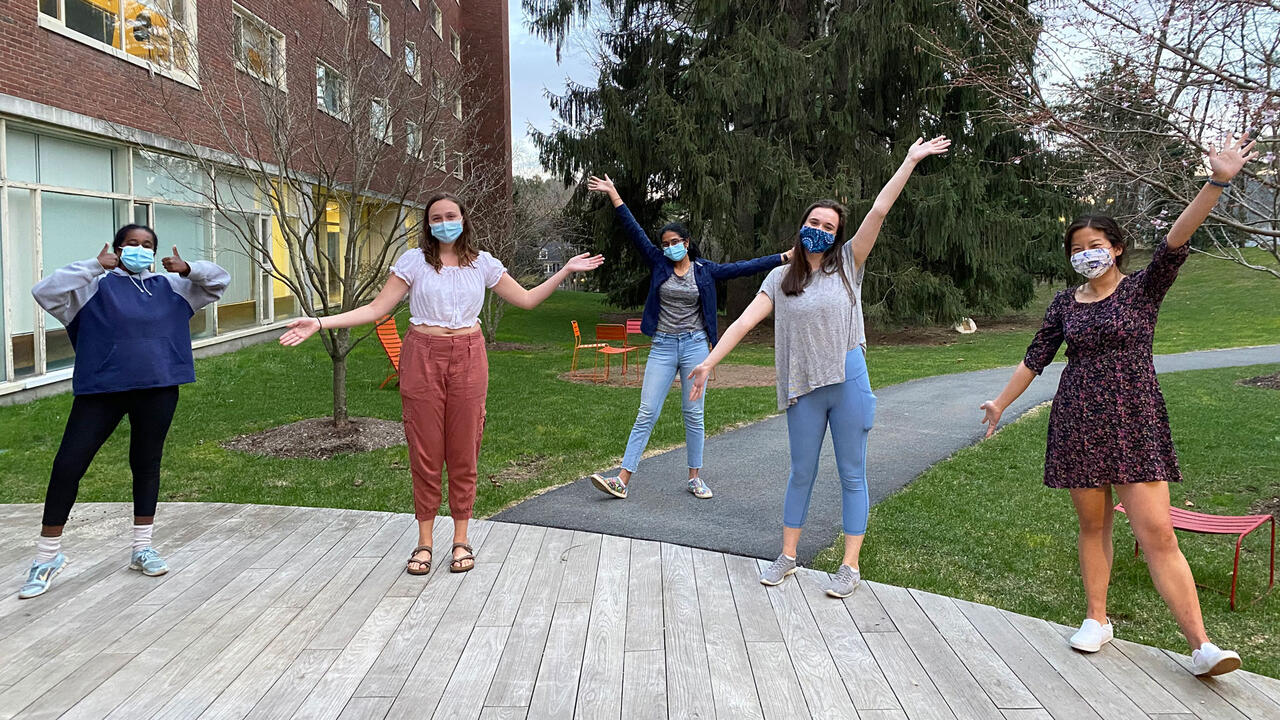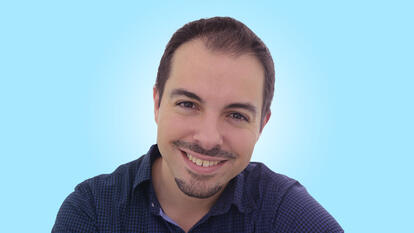
A Senior’s Experience as a Contact Tracer Inspires Her to Help Build Community on Campus
Sophia Ashebir ’21 became a COVID-19 contact tracer in Massachusetts with Partners In Health in April 2020. She called people and informed them of the need to quarantine because they may have been exposed to the virus. She was moved by the way they counted down the days until they could go outdoors again—to run with their dog or take a physically distanced and masked walk with a friend.
When the economics major returned to Wellesley in the fall, she was still thinking about the pandemic’s impact, and in particular about creating community during a time when gathering with others is discouraged. Ashebir talked about her experience with Caroline Witten ’21, who suggested she take an independent study in peace and justice with Erin Konkle, program director for Civic Engagement, to explore her ideas. The experiential learning half-unit course extends students’ theoretical learning by having them develop and apply knowledge, skills, and peacemaking principles to real-life situations. “PEAC 250H uses a project-based learning pedagogical design where students intentionally blur the lines between our classroom and the world around them to deepen their educational experience,” Konkle said.
Ashebir met with Konkle “almost every other week to talk about the intersection of contact tracing and community building,” she said. Konkle asked Ashebir what element of campus she would improve to help with community building, and Ashebir said she would create an outdoor community space. “There are a lot of green spaces on campus,” Ashebir said, “but not a lot of options to do things in those spaces, except take pictures or sit in the sun.”
“It’s been really interesting to see how a single project that might have come out of a single class has really broadened across the entire community, even at the admin level.”
Eashaa Jampala ’21
Konkle offered her a $500 grant from Career Education to get started. “I called some of my most creative, fun, exciting friends, and we formed a team and started thinking about this project, and then the ball just kept rolling,” Ashebir said.
The team includes Katharine Conklin ’22, Abby Webster ’22, Charlotte Durham ’21, Eashaa Jampala ’21, and Witten. “We all bring something wonderful to the table,” Ashebir noted in an email. Witten said the group cares about the community in different ways. An economics and peace and justice studies major, Witten has taken “Intersections of Technology, Social Justice and Conflict,” taught by Amy Banzaert, lecturer in engineering, and Catia Confortini, associate professor of peace and justice studies. The course focused on how people interact with technology, and has provided Witten with insight when considering this project. “It's been interesting to think about in terms of this space as well,” she said. “How are students going to interact with this space and with the different things that we bring?”
Together they brainstormed. “We had this laundry list of different ideas, and some of them were very out there,” Webster said. “One of my favorites was building a slide from the fourth floor of Lulu down to outside of Alumnae Hall.” Another idea was creating a zip line from the east side of campus to the west side. Eventually the group decided to create a non-reservable gathering space on campus in the grassy area next to the Schneider tennis courts. They plan to designate one part of it for relaxation, with string lights, a wheelchair-accessible picnic table, and Adirondack chairs. The other section will have games, like mega checkers and mega Jenga, along with a ping-pong table, beach balls, soccer balls, Frisbees, and arts and crafts.
Getting the project approved has required a lot of meetings and conversations. “It’s been really interesting to see how a single project that might have come out of a single class has really broadened across the entire community, even at the admin level,” Jampala said. “My favorite part has been seeing all the different people and connections we’ve had to make to get this project done.” They’ve met with deans Carol Bate and Sheilah Horton, and with Michelle Maheu, director of planning, design, and construction. They’ve worked with members of the Paulson Initiative to figure out how to connect the space to nature and with Jim Wice, director of the Office of Accessibility and Disability Resources, to make sure it is accessible. They’ve met with President Paula Johnson and senior leadership to share their ideas and answer questions. So far they’ve been approved at every step, and they are waiting for their final funding request to pass through the Senate before making larger purchases. They plan to have the space available to use by the end of the semester.
Though it was inspired in response to the pandemic, the students hope that people will find joy in the outdoor space at any time. “This might have seemed like just a student project, but it isn’t,” Jampala said. “It’s going to last beyond even our class, and that’s a really cool thing to be part of.”



